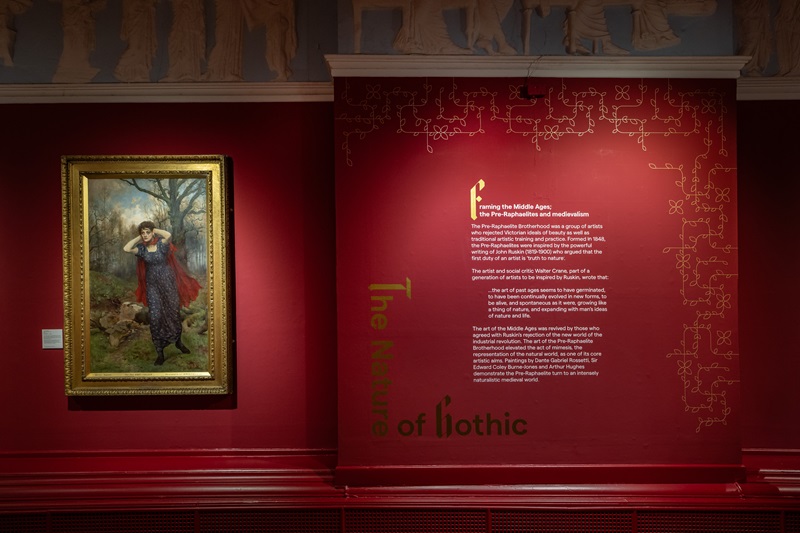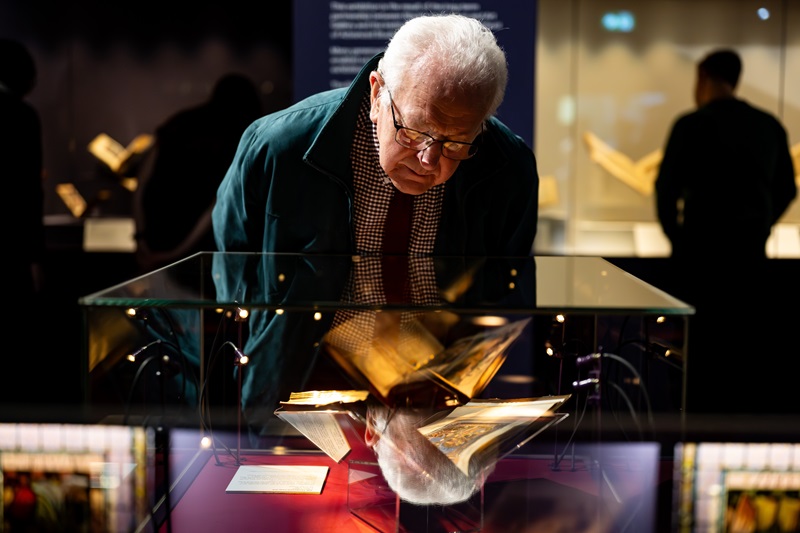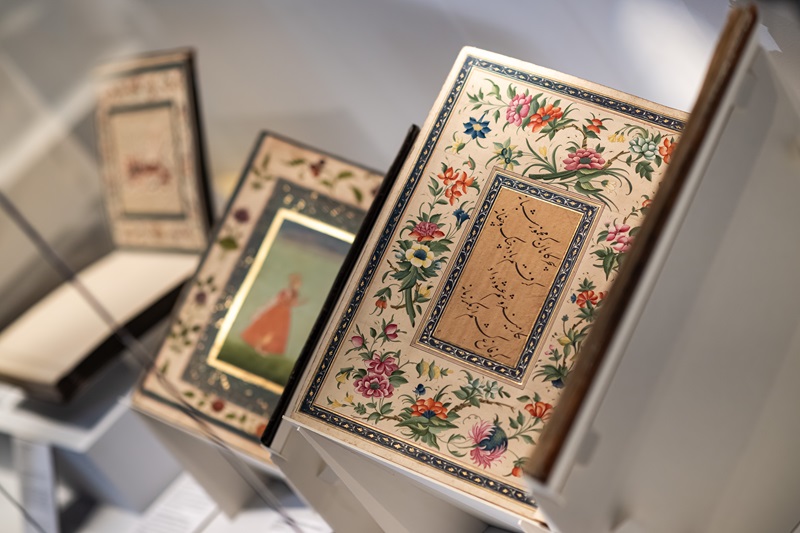The Nature of Gothic at Blackburn Museum & Art Gallery
- Home
- The Nature of Gothic at Blackburn Museum & Art Gallery
Blackburn Museum and Art Gallery’s latest exhibition The Nature of Gothic: Reflecting the Natural World in Historic and Contemporary Artistic Practice (until December 13, 2025), explores how artists across centuries have represented the natural world.
The Nature of Gothic is an opportunity to see some of the finest manuscripts, ceramics and art works all together outside of London.
Co-Curators of the exhibition Anthea Purkis and DR Cynthia Johnson, agreed to speak with us about this unique exhibition and Blackburn Museum & Art Gallery’s internationally significant collections.
Before we hear about the latest exhibition some people may not be aware of the very important collections held by the Blackburn Museum and Art Gallery, can you tell us a more about them?
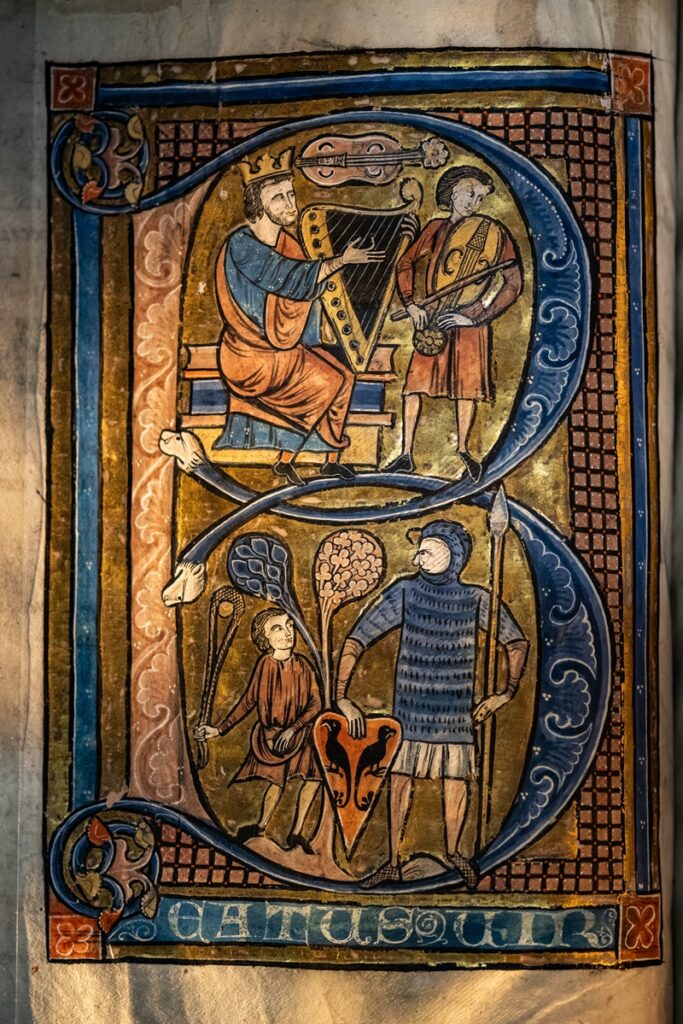 RE Hart was born in Blackburn, studied at Cambridge University and returned to Blackburn to run the family rope making business. He collected manuscripts and coins from across the world and bequeathed those collections to Blackburn Museum & Art Gallery when he died in 1946.
RE Hart was born in Blackburn, studied at Cambridge University and returned to Blackburn to run the family rope making business. He collected manuscripts and coins from across the world and bequeathed those collections to Blackburn Museum & Art Gallery when he died in 1946.
The manuscripts include medieval Christian religious texts, eighteenth and nineteenth century Islamic religious texts, some of the earliest products of the moveable type printing press invented by Johannes Gutenberg in the fifteenth century, private press books produced during the Arts and Crafts movement of the nineteenth century and nineteenth and twentieth century first editions.
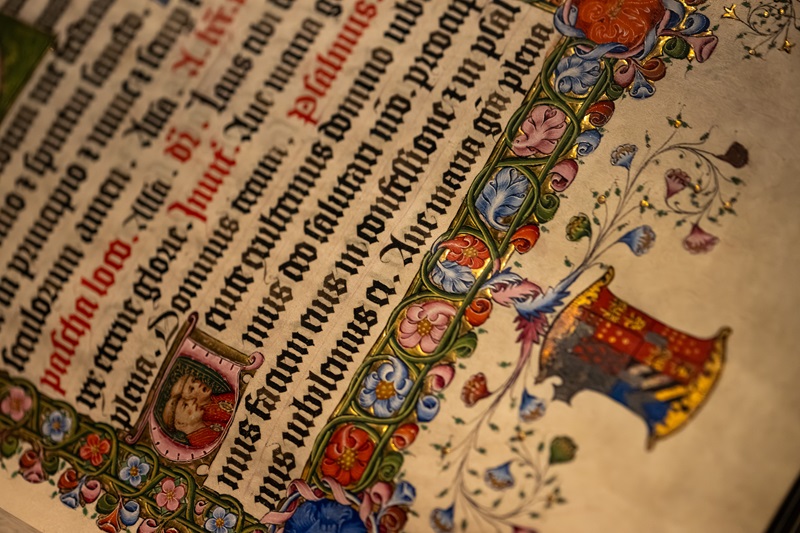 Every medieval manuscript is unique as they were all made by hand; the same is true of early printed books from the fifteenth century. There were variations in every copy produced by the new technology of Gutenberg’s invention.
Every medieval manuscript is unique as they were all made by hand; the same is true of early printed books from the fifteenth century. There were variations in every copy produced by the new technology of Gutenberg’s invention.
How far have visitors, curators or academics travelled to see the collections in Blackburn?
People have visited from London and other areas in the south of England. A couple commented that they had seen the exhibition advertised and assumed it was in the London area. They were happy to travel to Blackburn to see the exhibition once they realised where Blackburn was.
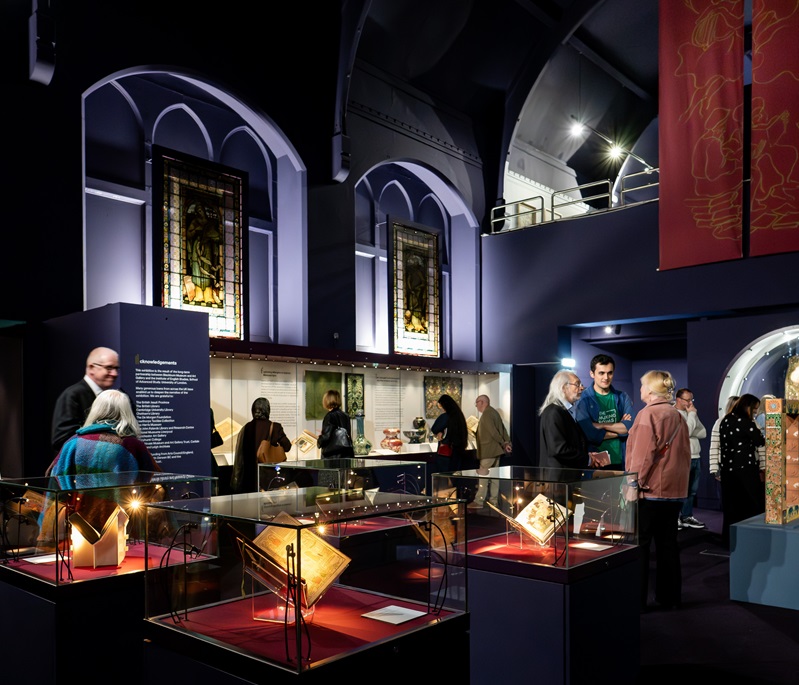 I don’t think that there is only one draw for visitors. This exhibition is a great opportunity to see lots of wonderful objects all in one place, and for that place to be in the North West and free for all visitors is possibly a draw in itself.
I don’t think that there is only one draw for visitors. This exhibition is a great opportunity to see lots of wonderful objects all in one place, and for that place to be in the North West and free for all visitors is possibly a draw in itself.
In the past we have loaned manuscripts and rare books from Blackburn’s Hart Collection for London exhibitions. For the Nature of Gothic, national museums have lent to Blackburn where we have ‘matched’ objects made by the same artists. For the British Library loan for example, we have paired British Library manuscripts with Blackburn Museum manuscripts made by the same artists working in fifteenth-century Paris, London and the Netherlands.
I don’t think that other people or institutions realise what amazing objects, manuscripts and artworks we have in our collections, which is one of the reasons that we have curated Nature of Gothic and been involved in other exhibitions over the past 10 years, Holding the Vision (2020)and Cotton to Gold (2014), which showcase the wonderful things that have been donated to the museum by dedicated Blackburn collectors over the years.
The British Library very rarely loan manuscripts which they consider to be ‘national treasures’. The Bedford Psalter is a very famous manuscript that is very rarely displayed or lent for exhibitions. It is thrilling to have it as part of The Nature of Gothic.
Individually do you a favourite piece in the collections?
Anthea’s favourite: We have such an extensive collection that it is difficult to narrow down a favourite piece, but if I was to chose from the objects featured in this exhibition, I would say the Blackburn Psalter with the funny grotesques around the decorated border.
Cynthia’s favourite: I think my favourite might be the fabric sample of ‘Strawberry Thief’ from William Morris’ shop on Oxford Street from the 1880s loaned by Tullie House Museum and Art Gallery Trust in Carlisle.
Why should people come to see the latest exhibition and what do you hope they’ll learn or take away from their visit?
The Nature of Gothic is an opportunity to see some of the finest manuscripts, ceramics and art works all together outside of London. This selection of objects which document the use of the natural motif throughout the years, meaningfully chosen by Dr Cynthia Johnston, will never be displayed together again.
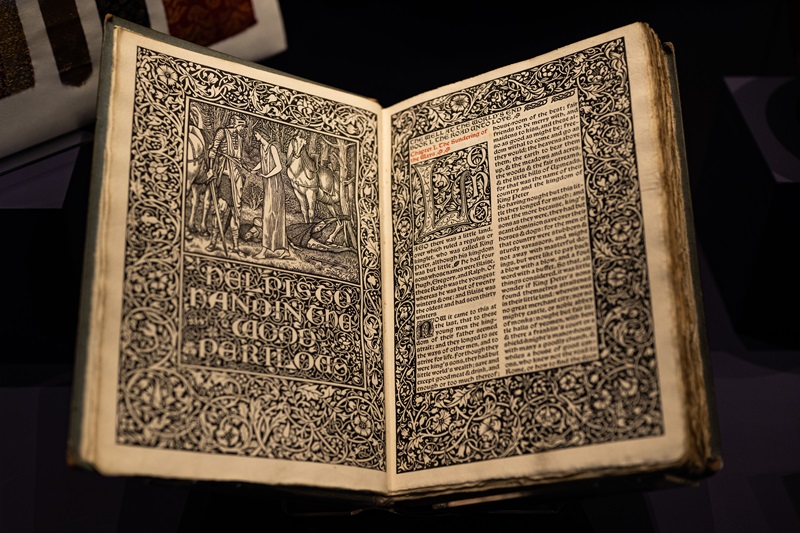 Dr Johnson has created a vibrant, beautiful exhibition, which clearly shows the progression of the use of nature as a decorative feature, from its earliest use in Islamic art through religious texts, ceramics, textiles and the art of the Pre-Raphaelites and the Arts and Crafts Movement.
Dr Johnson has created a vibrant, beautiful exhibition, which clearly shows the progression of the use of nature as a decorative feature, from its earliest use in Islamic art through religious texts, ceramics, textiles and the art of the Pre-Raphaelites and the Arts and Crafts Movement.
Also, this is the first time since 1946 that RE Hart’s collection of rare books has been reunited in one place through the loan from Cambridge University Library.
The Islamic texts on loan from the John Rylands Research Institute and Library highlight the Islamic texts in Blackburn. The Rylands loan includes a 15th-century Qur’an with borders illuminated with glowing gold.
____________________________________________________________________________
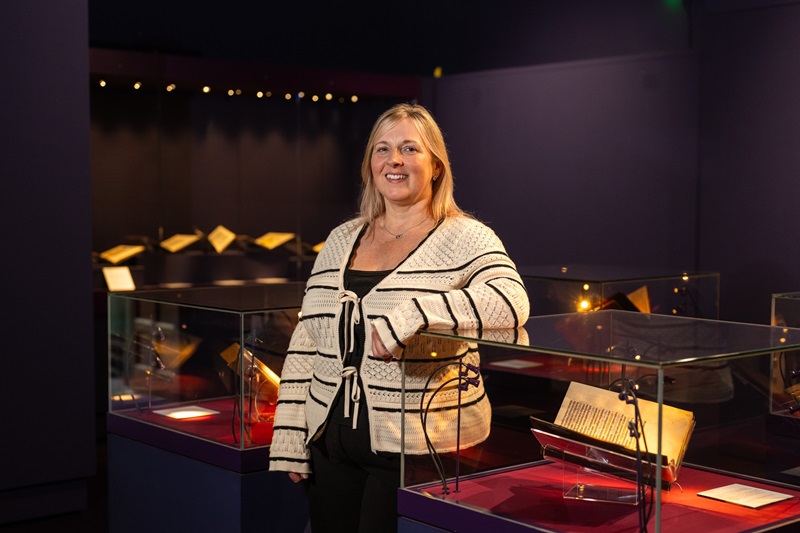 Anthea Purkis is Curator of Art at Blackburn Museum and Art Gallery and Co-curator of The Nature of Gothic. Born in Blackburn, she attended school and college in Blackburn, before studying at the University of Liverpool and the University of Leicester. She returned to Lancashire and has worked at Blackburn Museum and Art Gallery since 2020.
Anthea Purkis is Curator of Art at Blackburn Museum and Art Gallery and Co-curator of The Nature of Gothic. Born in Blackburn, she attended school and college in Blackburn, before studying at the University of Liverpool and the University of Leicester. She returned to Lancashire and has worked at Blackburn Museum and Art Gallery since 2020.
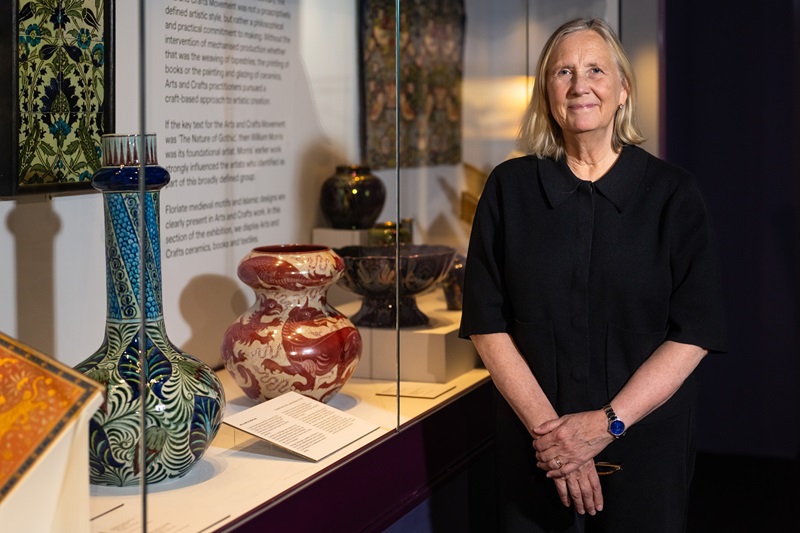 Dr Cynthia Johnston is Co-curator of The Nature of Gothic and Senior Lecturer in the History of the Book, Institute of English Studies, School of Advanced Study, University of London. She has maintained an academic partnership with the Blackburn Museum and Art Gallery since 2012 resulting in two exhibitions in London (Senate House Library in 2012 and 2 Temple Place in 2014) and two in Blackburn Museum and Art Gallery (2020 and 2025)
Dr Cynthia Johnston is Co-curator of The Nature of Gothic and Senior Lecturer in the History of the Book, Institute of English Studies, School of Advanced Study, University of London. She has maintained an academic partnership with the Blackburn Museum and Art Gallery since 2012 resulting in two exhibitions in London (Senate House Library in 2012 and 2 Temple Place in 2014) and two in Blackburn Museum and Art Gallery (2020 and 2025)
___________________________________________________________________
Blackburn Museum & Art Gallery
Museum Street,
Blackburn BB17AJ
Open Tuesday – Saturday 11am – 4.45pm – FREE entry
Closed Sunday, Monday and all Bank Holidays
For further information: www.blackburnmuseum.org.uk
